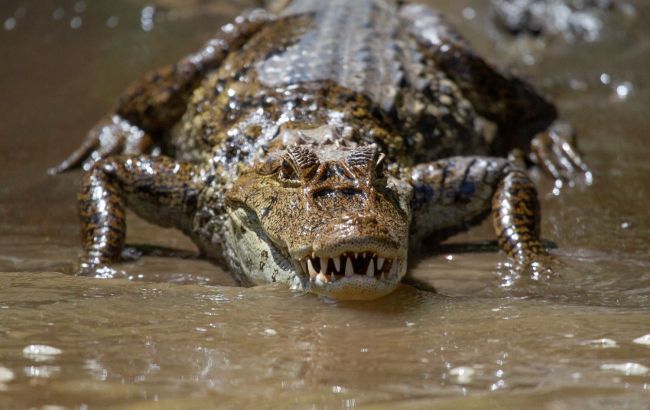Scientists find secret behind predatory appearance of crocodiles
 Why crocodiles have a predatory appearance (illustrative photo: Freepik)
Why crocodiles have a predatory appearance (illustrative photo: Freepik)
The menacing appearance of crocodiles instills fear and disgust in many. However, it turns out that this effect is achieved not only through the predator's behavior but also due to the unique features of their scales.
Study published in the journal Nature reports on the distinctive features behind the fearsome look of crocodiles.
A team of biologists from the Laboratory of Artificial and Natural Evolution at the University of Geneva decided to investigate the development process of crocodiles. Through their research, scientists discovered how the polygonal scales form on the crocodile's skin.
It turned out that the skin on the predator's head differs from that covering the rest of the crocodile's body. This special effect likely contributes to the creature's eerie appearance, making it appear more formidable.
The development process in crocodiles, which results in the skin forming a distinct pattern, is completely different from that of other organisms.
However, the exact reasons behind the specific arrangement and combination of scales were not fully understood. The researchers then hypothesized that this might be influenced by differences in the rate of growth of the skin.

The skin on a crocodile's head differs from the rest of its scales (illustrative photo: Freepik)
To test their theory, scientists conducted experiments with Nile crocodile eggs by introducing the protein EGF. This increased the growth rate of the epidermis and enhanced its rigidity, accelerating the natural development process. The researchers also used computer modeling to further analyze the phenomenon.
The research team found that the scales on the crocodile's head form during the embryo's development, as a result of a specific mechanical process. Initially, the skin on the crocodile's head is smooth, but as the predator grows, the surface wrinkles, creating the irregular, intricate scales.
This process occurred because the crocodile's skin grew faster than the underlying bones. Additionally, the unusual scale pattern was influenced by the differing stiffness between the dermis and the epidermis.
According to the scientists, this is a simple evolutionary mechanism for crocodiles, ensuring a variety of scale patterns on the heads of different crocodile species. This unusual process was completely opposite to what happens with most mammals during adolescence.
In addition, we discussed how many times a lizard can regenerate its tail.

